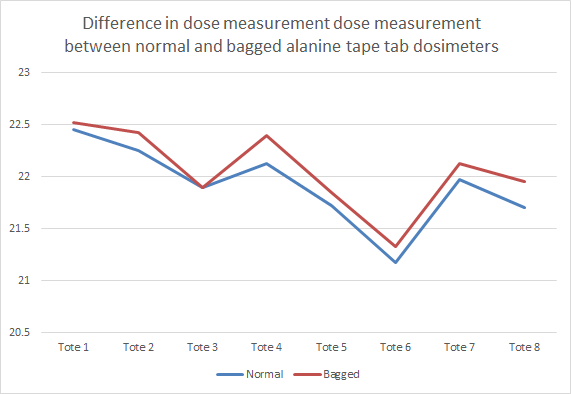Considerations when using alanine tape tab dosimeters on frozen product during irradiation
Scarlett Kynance1, David Pymer3, Maria Cahill2.
1Operations, Harwell Dosimeters Limited, Didcot, United Kingdom; 2Quality, Harwell Dosimeters Limited, Didcot, United Kingdom; 3Technical, Harwell Dosimeters Limited, Didcot, United Kingdom
Industrial irradiation is performed across a range of conditions. For animal serums, it’s necessary to maintain the low temperature to preserve the serums performance. Cold chain starts at the serums manufacture and must be maintained throughout the irradiation process. To support this, dry ice is typically used.
As ionizing radiation is a form of energy, gamma dose delivery will inherently introduce heat, with average temperatures being anywhere from 35-45oC within the bunker. As the ice heats up during irradiation, it can melt, introducing additional moisture / condensation. Should the alanine tape tab dosimeter not be placed appropriately, moisture could get into the alanine tablet pocket temporarily affecting its performance. It’s important to note that irradiated alanine dosimeters which have been in contact with additional moisture can ‘acclimatise’ when put into temperature and humidity-controlled rooms and be measured accurately post irradiation.
Packaging and dry ice packing requirements for irradiation should be considered as part of the performance qualification (PQ) of the irradiation process. Considerations should also be given to dosimetry placement when dry ice is used because of this.
The purpose of this study is to present alternative options for dosimeter placement when using alanine tape tab dosimeters to mitigate any negative moisture impact to the dosimeter performance, for process repeatability when using dry ice in the irradiation process.
Our findings from alanine tape tab dosimeters processed in a tote irradiator, placed in small bags have consistent dose readings compared to when ‘unbagged’, thus providing a suitable protective barrier when using dry ice for serums.
